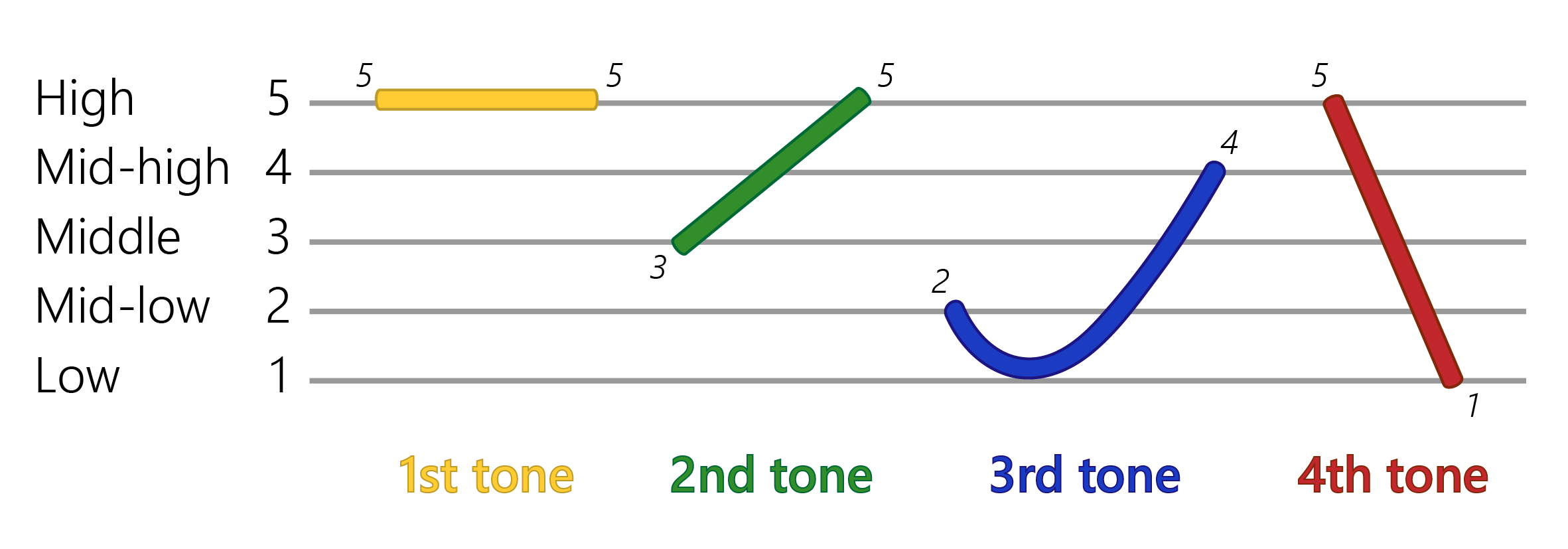22 Tone Sandhi Rules for the 3rd Tone
Among the Chinese lexical tones, the 3rd tone displays the most variation, being pronounced in three different ways depending on the surrounding tones. This is commonly known as tone sandhi. Here is a quick reminder to help you visualize the differences in the tones.

The 3rd tone is pronounced as a full 3rd tone when it occurs alone or at the end of the word.
When two syllables with 3rd tone occur side-by-side, the tone of the first 3rd tone syllable is pronounced as the 2nd tone.
| Pinyin vs. Pronunciation | English Equivalent | |
|---|---|---|
| 你好 nǐ+ hǎo → ní + hǎo |
hello | |
| 很好 hěn + hǎo → hén + hǎo |
very good | |
| 表演 biǎo + yǎn → biáo + yǎn |
perform | |
| 语法 yŭ +fǎ → yú + fǎ |
grammar |
When a 3rd tone syllable is followed by a non-3rd tone syllable ( i.e. a 1st tone syllable, a 2nd tone syllable, a 4th tone syllable or a neutral tone syllable), the first 3rd tone syllable is pronounced as a half 3rd tone where the tone drops, but not have the subsequent rise in tone normally associated with 3rd tone.
| Pinyin vs. Pronunciation | English Equivalent | |
|---|---|---|
| 老师 ǎo + shī → half 3rd + shī |
teacher | |
| 好人 hǎo + rén → half 3rd +rén |
good people | |
| 很帅 hěn + shuài → half 3rd + shuài |
very handsome | |
| 我的 wǒ + de → half 3rd +de |
mine |
Please note that despite any changes in pronunciation, the Pinyin syllable is always marked with the original (full) 3rd tone.
Listening Quiz
Listen to the following words and identify the actual tone in which the 1st syllable is pronounced. For example if you hear lăo shī, where the first syllable (spelled with a full 3rd tone) is pronounced as a half 3rd tone, then choose the half 3rd tone as the answer.

